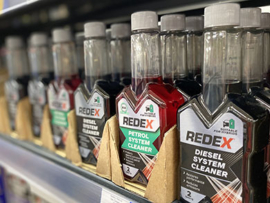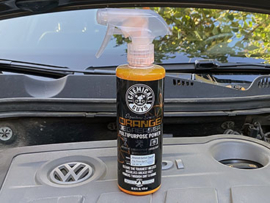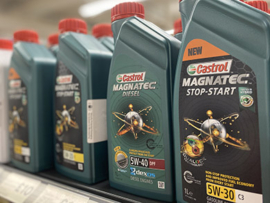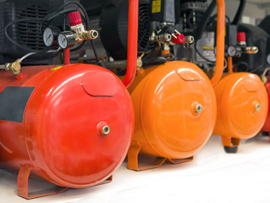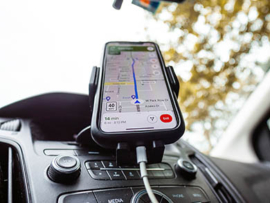
Ever since the introduction of the first standardized lead-acid battery, fitted by the Hudson Motor Car Company in 1918, the motor industry has sought to simplify maintenance and extend the life of what is often referred to as the “starter battery”.
In so doing, battery manufacturers have developed different battery technologies that address lifespan and some of the other inherent shortcomings of the flooded lead-acid battery when fitted to the motor car.
Car Battery Lifespan & Causes of Premature Aging
While there are many variables that determine the lifespan of an automotive lead-acid battery, the primary cause of battery failure is the depletion of the lead and lead dioxide on the battery’s plates that are meant to react with the sulfuric acid in the electrolyte to generate electricity.
While depletion of the active materials, described above, forms part of the normal electricity generation process there are several factors that exacerbate the deterioration:
1. High operating temperatures – the best operating temperature for a lead-acid battery is 25oC.
2. Low electrolyte levels – often caused by:
- Lack of maintenance – in flooded batteries, without valve regulation, it is important to periodically replenish the electrolyte to keep the correct level.
- An overcharging alternator – if the charge rate exceeds about 14.2V the electrolyte will begin to evaporate.
3. Depth of discharge – if a lead-acid battery is regularly discharged below 12.2V sulfate crystals build-up, leading to sulfation.
4. Battery design and chemistry – absorbent Glass Mat and Gel batteries can better withstand higher temperatures and “deep draw” cycles.
As car designers increase the number of electrical systems, thereby placing greater demands on the battery, failures due to grid corrosion of the positive electrode, depletion of the active material and expansion of the positive plates are growing.
See also: The Best Multimeters For Automotive Demands
According to a Battery Council International Failure Modes Study, plate- and grid-related failures in aging batteries increased from 30 percent in 2005 to 39 percent in 2010. Although the report does not detail the reasons for this deterioration, it is safe to assume that the higher demands on the starter battery in later model vehicles have a major role to play.
But all batteries are not created equal: Some seem to cope better with the extra load and last longer.
NOTE: The choice of car battery significantly influences the lifespan
Depending on the car starter battery design the life expectancy, normally expressed as discharge/charge cycles, can vary quite considerably:
- Sealed lead-acid battery, which includes the valve-regulated lead-acid (VRLA) variant, is capable of delivering between 200 to 300 discharge/charge cycles, equating to a life of about 4 to 5 years under normal operating conditions.
- Absorbent Glass Mat (AGM) lead-acid batteries can withstand about 300 to 700 cycles.
- Gel batteries, where the electrolyte is made up of sulfuric acid mixed with fumed silica, usually have a quoted lifespan of between 500 to 5000 cycles.
12-Volt Gel and AGM batteries are commonly referred to as “maintenance-free”, as both are sealed and therefore require no maintenance. This extends the lifespan to six years, or even longer under ideal conditions. Typically, if kept at 25oC, these batteries are capable of holding up to 80 percent of their original capacity over six years.
But with the steady increase in hybrid and/or electric vehicles, are these batteries still relevant?
The Battery’s Lifespan in Hybrid and Electric Cars
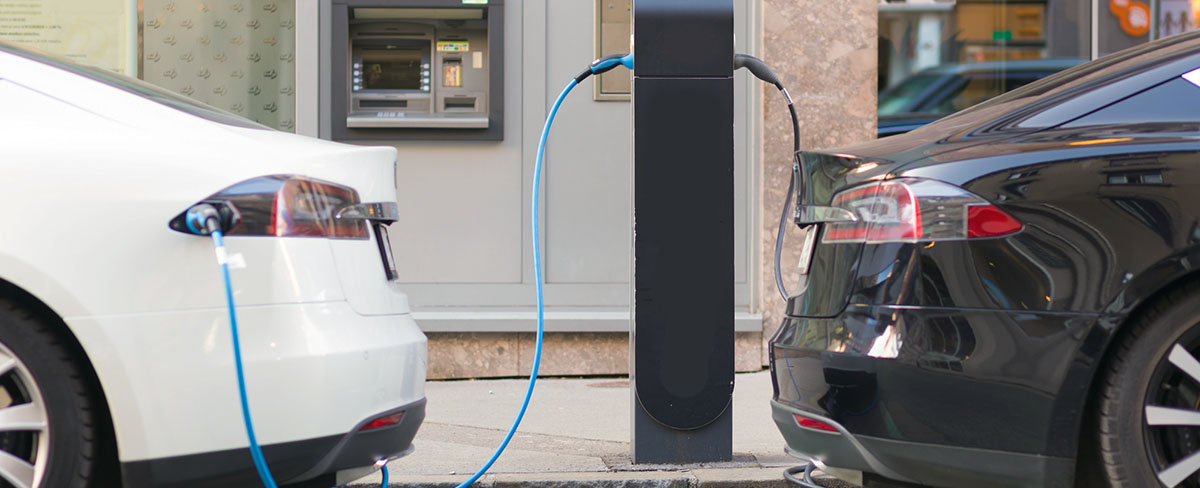
Notwithstanding the impressive performance, durability and lifespan of the lead-acid battery in traditional applications, electrification of the powertrain call for novel solutions to new challenges – and in some cases, completely new technologies.
Requiring the least amount of electrical energy, the start-stop or micro-hybrid still relies on the traditional starter battery to power its starter – albeit an AGM with deep cycling capability.
In cars not equipped with automatic start-stop systems, the starting process is usually a one-off occurrence, allowing the alternator time to recharge the battery over the remainder of the trip. However, in the micro-hybrid, the battery is required to power the starter motor every time the vehicle moves off from a stop, which in traffic can rapidly drain the battery beyond its designed state of charge, leading to premature sulfation and radically reduced battery life.
The AGM battery is the ideal answer to the “deep cycle” demands of the start-stop system – allowing for an 80 percent depth-of-discharge compared to the 50 percent limit demanded by the flooded lead-acid battery for the same lifespan. Even at low temperatures, these batteries are capable of delivering 100 to 200 cycles before any degradation is detected.
However, while these batteries are well suited to meeting the requirements of the micro-hybrid, higher levels of electrification found in Mild Hybrid (MHEV), Hybrid (HEV) and Plugin Hybrid Electric Vehicles (PHEV) require batteries capable of delivering greater energy densities: Lead Acid, Gel and AGM batteries typically supply between 30 and 40 Wh/ kg, whereas hybrid vehicles require densities many times more than this.
Currently, the only technology capable of meeting these energy demands comes in the form of the Lithium-ion battery (LiB), which at a cell level is capable of achieving densities of up to about 240Wh/kg.
Thus, these hybrid vehicles are equipped with two batteries: The traditional 12V lead-acid battery, charged from the alternator and used to power the starter motor and ancillary electrical systems, and a higher voltage Li-Ion battery charged by harvesting energy from slowing the vehicle down which is in turn used to drive the electric traction motor.
These batteries also have a longer lifespan: with current Li-Ion batteries capable of achieving in excess of 8 years, battery manufacturer CATL recently revealed the “Million Mile Battery“. Also, the electric-car market leader TESLA significantly increases the warranty on the life of their newest car batteries.
However, much like its lead-acid counterpart, the Li-Ion battery’s lifespan is also reliant on operating conditions, including:
- Charge rate – In PHEVs capable of “fast charging” with high powered DC chargers, regular use of these can reduce the number of cycles the battery will deliver.
- Operating temperatures – the ideal temperature ranges from 15 °C to 35 °C.
This is similar to the 25oC often quoted as the optimum operating temperature for the lead-acid battery, with both battery types experiencing a significant deterioration in battery life and performance as temperatures move away from the ideal.
How Does Temperature Affect the Car Battery Lifespan?
While an increase in temperature improves the mobility of electrons in the electrochemical reaction that takes place at the lead-acid battery’s plates, higher temperatures also accelerate sulfation thereby reducing the lifespan of the cells.
On the other hand, just as heat assists with the chemical reaction, cold temperatures hinder the process. That’s partially why, under cold conditions, the engine may be reluctant to turn over – even though the battery is fully charged.
NOTE: High temperatures play havoc with the car battery’s lifecycle.
It is estimated that in a lead-acid battery a sustained increase of 8°C could reduce battery life by as much as 50 percent. Thus, a VRLA which could last for 4 years at 25°C would likely only last 2 years at the 33°C ambient temperatures typically experienced in warmer regions such as Florida, Arizona and Texas.
This is no less true for LiBs: Research conducted by Pecht et al, on the effect of temperature on the aging rate of the LiB, concluded that an increase from 25 to 55°C raises the degradation rate from 4.22 to 13.24 percent measured after 260 cycles.
This temperature degradation leads Nissan to upgrade the Leaf’s battery cells after owners of early models operating in areas such as Arizona and Texas complained that after only six years and 91,000 miles, battery packs had lost 40 percent of their original capacity, with the range reduced to only 35 miles.
While extremely high temperatures reduce the battery’s life expectancy, cold weather severely hampers electrical performance.
Short Car Battery Life When Cold? Not exact.

Lead-acid starter batteries lead a particularly difficult life in freezing temperatures: not only does the engine oil thicken thereby increasing the engine’s internal friction, but the battery’s power delivery is at the same time also reduced.
One of the measurements of an automotive starter battery’s performance is the Cold-Cranking Amperage – the amount of current a battery can deliver for 30 seconds at -18o C without dropping to the cut-off voltage. A fully charged battery would normally be capable of providing sufficient current up to –50o C, but a battery with a low SoC (State of Charge) – the ratio of the remaining capacity to the overall available capacity – could already freeze at –1o C.
See also: The Best Car Emergency Kits and Best Synthetic Engine Oils
This becomes problematic for people living in states such as Alaska, Minnesota and Michigan where extremely cold winter temperatures can cause the freezing electrolyte to expand, irreparably damaging the cells.
With winter outdoor temperatures in these areas regularly dropping below 0 °C Lithium-ion batteries fitted to hybrid or electric vehicles also suffer a similar drop in performance.
Under these cold conditions owners of hybrid EVs with unconditioned batteries (Systems that do not actively warm the battery pack) can expect the SoC to decrease significantly: A drop in temperature from 25°C to −15°C can reduce the SoC by 23 percent, while at -18o C a LiB will typically only deliver 50 percent of its capacity.
Even though, in a hybrid vehicle, the owner is unlikely to notice any major drop in performance the assistance from the electric traction motor will be impaired resulting in increased emissions and fuel consumption.
While owners can do little about extremes in the weather, there are several actions that they can take to optimize battery life.
Optimizing the Car Battery Life
To get the best life out of a flooded lead-acid battery it is important to regularly inspect the level of the electrolyte and top up if required.
In addition, vehicles that do very short trips that do not allow the alternator sufficient time to recharge the battery will benefit from a periodic slow charge lasting 14 to 16 hours.
For vehicles operating under severe climatic conditions, it may even be advisable to replace the battery with one better suited to the application. For instance: In hot or cold climates a Gel battery will outperform a flooded version, with the gel having lower freezing and higher boiling points than the liquid electrolytes used in other batteries.
In the case of hybrid electric vehicles, there isn’t much an owner can do to preserve or extend the life of the LiB, although maintaining the battery’s charge by allowing the vehicle to coast to a stop instead of harshly applying the brakes will assist the regenerative charging of the battery.
Even though the car battery is probably one of the modern vehicle’s least thought about components, a little care and maintenance will go a long way to ensuring the battery’s lifespan.


